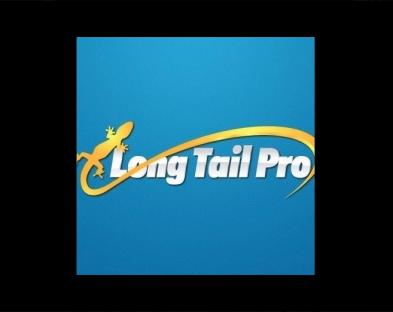Picture this: You’re sitting at your computer, watching your competitors climb the search rankings while your website struggles to get noticed. You know you need the right keywords to succeed, but finding those hidden gems feels like searching for treasure without a map. For many SEO professionals and bloggers, Long Tail Pro was once that trusted map guiding them to keyword gold.
But what happened to this popular keyword research tool that helped over 70,000 marketers worldwide? In this comprehensive Long Tail Pro review, we’ll explore the rise and fall of this SEO software, examine viable alternatives, and help you understand what this means for your keyword research strategy in 2024.
What Was Long Tail Pro?
Long Tail Pro was a specialized keyword research tool launched in 2011 by Spencer Haws, founder of Niche Pursuits. The software focused specifically on finding long tail keywords - those longer, more specific search phrases that typically have lower competition and higher conversion rates.
Key Features That Made Long Tail Pro Popular
The tool gained popularity for several reasons:
Bulk Keyword Generation: Long Tail Pro could generate up to 800 keyword suggestions from a single seed keyword, making it incredibly efficient for content creators and SEO professionals.
Keyword Difficulty Calculation: The software provided keyword competitiveness scores, helping users identify which terms would be easier to rank for in search engines.
SERP Analysis: Users could analyze the top-ranking pages for any keyword, examining factors like domain authority, backlinks, and page optimization.
Rank Tracking: The platform offered position monitoring for target keywords, allowing users to track their SEO progress over time.
Domain Availability Checker: For those building niche websites, the tool could check if exact match domains were available for specific keywords.
The Target Audience
Long Tail Pro primarily served:
- Affiliate marketers building niche websites
- Bloggers looking for low-competition content opportunities
- Small business owners wanting to compete with larger competitors
- SEO agencies managing multiple client campaigns
- Amazon FBA sellers researching product keywords
The Shutdown: What Happened to Long Tail Pro?
Important Update: As of June 2024, Long Tail Pro has permanently shut down and is no longer available for purchase. The website went offline, customer support stopped responding, and all existing subscriptions were terminated without notice.
Timeline of Events
March 2024: Users began reporting website accessibility issues and unresponsive customer support.
June 5, 2024: The Long Tail Pro website and software became completely inaccessible.
August 2024: Industry experts confirmed the permanent shutdown of the service.
Reasons Behind the Closure
While the company never provided an official explanation, several factors likely contributed to the shutdown:
Increased Competition: Tools like SEMrush, Ahrefs, and Moz expanded their keyword research capabilities significantly.
Data Accuracy Concerns: Users frequently complained about inconsistent keyword volume and difficulty metrics.
Limited Feature Development: Compared to comprehensive SEO platforms, Long Tail Pro remained relatively basic.
Pricing Pressure: Many free and low-cost alternatives emerged, making the paid model less attractive.
Long Tail Pro Pricing History
Before its shutdown, Long Tail Pro offered three pricing tiers:
Starter Plan - $37/month
- 800 keyword results per day
- 800 keyword competitiveness calculations
- 800 SERP lookups daily
- 30 tracked keywords
- Basic filtering options
Pro Plan - $67/month
- 1,600 keyword results per day
- 1,600 competitiveness calculations
- 1,600 SERP lookups daily
- 200 tracked keywords
- Advanced filtering and grouping
Agency Plan - $147/month
- 3,200 keyword results per day
- 3,200 competitiveness calculations
- 3,200 SERP lookups daily
- 1,000 tracked keywords
- White-label reporting options
Strengths and Weaknesses of Long Tail Pro
What Users Loved
Simplicity: The interface was straightforward and didn’t overwhelm beginners with too many features.
Speed: The cloud-based system could generate keyword lists quickly compared to some competitors.
Long Tail Focus: The tool excelled at finding specific, niche keyword opportunities.
Rank Value Feature: This unique feature helped users estimate potential earnings from different keywords.
Exact Match Domain Checking: Valuable for those building affiliate or niche websites.
Major Drawbacks
Limited Free Trial: Unlike competitors, Long Tail Pro offered no free trial period.
Data Accuracy Issues: Users frequently reported questionable search volume and competition metrics.
Poor Customer Support: Many customers complained about slow or non-existent support responses.
Basic Feature Set: Lacked advanced features like content optimization, technical SEO auditing, and competitor analysis.
High Cost: Expensive compared to more comprehensive alternatives.
The Importance of Long Tail Keywords in SEO
Understanding why Long Tail Pro focused on long tail keywords helps explain its initial popularity. These keywords remain crucial for SEO success in 2024.
What Are Long Tail Keywords?
Long tail keywords are search phrases typically containing 3-5 words or more. They’re more specific than short tail keywords and usually have:
- Lower search volume (often under 1,000 monthly searches)
- Less competition from other websites
- Higher conversion rates due to specific user intent
- Better alignment with voice search queries
Benefits of Targeting Long Tail Keywords
Easier Ranking: With less competition, new websites can achieve first-page rankings more quickly.
Higher Conversion Rates: Users searching for specific phrases are often closer to making a purchase decision.
Cost-Effective PPC: Long tail keywords typically have lower cost-per-click in Google Ads.
Voice Search Optimization: Natural language queries align perfectly with long tail keyword strategies.
Content Variety: These keywords inspire diverse, specific content that serves user needs better.
Long Tail Keyword Examples
- Short tail: “running shoes”;
- Long tail: “best waterproof running shoes for flat feet”;
- Short tail: “coffee maker”;
- Long tail: “programmable coffee maker under 100 dollars”;
- Short tail: “weight loss”;
- Long tail: “how to lose weight after pregnancy without breastfeeding”;
Best Long Tail Pro Alternatives in 2024
With Long Tail Pro gone, users need reliable alternatives. Here are the top options:
1. SEMrush - The Comprehensive Choice
Pricing: Starting at $139.95/month
Best For: Agencies and established businesses needing full-spectrum SEO tools
Key Features:
- Keyword Magic Tool with millions of keyword suggestions
- Competitor keyword gap analysis
- Content optimization recommendations
- Rank tracking across multiple devices and locations
- PPC and social media marketing tools
Pros:
- Massive keyword database (over 12 billion keywords)
- Excellent SERP feature tracking
- Integration with Google Analytics and Search Console
- Regular feature updates and improvements
Cons:
- Expensive for small businesses
- Steep learning curve for beginners
- Can be overwhelming with too many features
2. Ahrefs - The Backlink Authority
Pricing: Starting at $129/month
Best For: SEO professionals focused on link building and competitor analysis
Key Features:
- Keywords Explorer with clickstream data
- Comprehensive backlink analysis
- Content gap analysis
- Site audit and technical SEO tools
- Rank tracking with SERP overview
Pros:
- Most accurate backlink data in the industry
- User-friendly interface
- Excellent keyword difficulty metrics
- Strong customer support
Cons:
- Credit-based pricing system can be limiting
- Less focus on PPC and social media
- No free tier available
3. SE Ranking - The Budget-Friendly Option
Pricing: Starting at $29/month
Best For: Small businesses and individual bloggers wanting comprehensive SEO tools
Key Features:
- Keyword suggestion tool with local search data
- White-label reporting for agencies
- Website audit and optimization recommendations
- Social media management tools
- Marketing plan templates
Pros:
- Affordable pricing with generous features
- Intuitive user interface
- Good customer support
- Flexible payment options
Cons:
- Smaller keyword database than premium tools
- Limited advanced features compared to top competitors
- Newer company with less market presence
4. Ubersuggest - The Neil Patel Solution
Pricing: $29/month or $290 lifetime deal
Best For: Content creators and small businesses on tight budgets
Key Features:
- Keyword research and content ideas
- Competitor analysis and traffic insights
- Backlink analysis and opportunities
- Site audit with optimization suggestions
- Chrome extension for on-the-go research
Pros:
- Lifetime deal option available
- Simple, beginner-friendly interface
- Good content marketing focus
- Regular feature additions
Cons:
- Data accuracy questions for some metrics
- Limited advanced SEO features
- Smaller database than enterprise tools
5. Mangools (KWFinder) - The Long Tail Specialist
Pricing: Starting at $29.90/month
Best For: Bloggers and affiliate marketers focused specifically on long tail keyword research
Key Features:
- KWFinder for keyword research with difficulty scoring
- LinkMiner for backlink analysis
- SERPChecker for SERP analysis
- SiteProfiler for website analysis
- RankTracker for position monitoring
Pros:
- Excellent long tail keyword discovery
- Accurate keyword difficulty metrics
- Clean, intuitive interface
- Good value for money
Cons:
- Limited daily search quotas
- Separate tools require switching between interfaces
- Fewer features than comprehensive platforms
6. Free Alternatives
For budget-conscious users, several free tools can partially replace Long Tail Pro:
Google Keyword Planner: Free with Google Ads account, provides search volume and competition data.
Answer The Public: Generates question-based keywords perfect for content marketing.
Ubersuggest Free Version: Limited daily searches but useful for basic keyword research.
Google Search Console: Shows which keywords your site already ranks for.
Keyword.io: Free long tail keyword suggestions from multiple sources.
How to Choose the Right Long Tail Pro Alternative
Consider these factors when selecting a replacement:
Budget Considerations
Under $50/month: Consider SE Ranking, Ubersuggest, or Mangools $50-150/month: SEMrush or Ahrefs become viable options Enterprise Level: Custom pricing from major platforms
Feature Requirements
Basic Keyword Research: Free tools or budget options may suffice Comprehensive SEO: Choose SEMrush or Ahrefs Agency Needs: Look for white-label reporting and client management features Content Marketing Focus: Ubersuggest or SEMrush offer good content insights
Technical Expertise
Beginners: Start with Ubersuggest or SE Ranking Intermediate Users: Mangools or SEMrush work well Advanced SEO Pros: Ahrefs or SEMrush provide professional-grade features
Long Tail Keyword Research Strategies for 2024
Regardless of which tool you choose, follow these proven strategies:
1. Start with Seed Keywords
Begin with broad terms related to your niche, then expand into longer variations:
- Brainstorm 5-10 core topics
- Use keyword tools to generate variations
- Analyze competitor content for inspiration
- Check Google Autocomplete for real user queries
2. Analyze Search Intent
Understanding what users want helps create better content:
- Informational: “how to,”; “what is,”; “best way to”;
- Navigational: Brand names, specific websites
- Commercial: “best,”; “review,”; “comparison”;
- Transactional: “buy,”; “price,”; “discount”;
3. Use the Question Method
Questions make excellent long tail keywords:
- What: “what are the benefits of organic coffee”;
- How: “how to brew cold brew coffee at home”;
- Why: “why is single origin coffee more expensive”;
- When: “when to drink coffee for maximum energy”;
- Where: “where to buy fair trade coffee beans”;
4. Local SEO Opportunities
For local businesses, add location modifiers:
- “best pizza restaurant in chicago downtown”;
- “24 hour plumber near me emergency”;
- “organic grocery store seattle capitol hill”;
5. Leverage Customer Language
Use the exact words your customers use:
- Monitor customer service inquiries
- Analyze social media comments and questions
- Review product reviews and testimonials
- Survey customers about their pain points
The Future of Keyword Research
The SEO landscape continues evolving, affecting how we approach keyword research:
AI and Voice Search Impact
With voice assistants becoming more popular (8.4 billion devices by 2024), natural language queries are increasing. This trend favors long tail keyword strategies as users speak more conversationally than they type.
Google’s Algorithm Changes
Search engines better understand context and user intent, making keyword relevance more important than exact match optimization. Focus on topics rather than individual keywords.
Content Quality Over Keyword Density
Modern SEO emphasizes helpful, comprehensive content over keyword stuffing. Use long tail keywords naturally within valuable content.
Personalization and Local Search
Search results increasingly personalize based on user location, search history, and preferences. Local long tail keywords become more valuable for relevant businesses.
Implementing Your Long Tail Keyword Strategy
Follow this step-by-step process to replace Long Tail Pro’s functionality:
Phase 1: Research and Discovery (Week 1-2)
- Choose Your Alternative Tool: Based on budget and feature needs
- Identify Seed Keywords: 20-30 broad terms in your niche
- Generate Long Tail Variations: Use your chosen tool to expand each seed
- Analyze Competition: Check keyword difficulty and current rankings
- Prioritize Opportunities: Focus on high-value, low-competition terms
Phase 2: Content Planning (Week 3-4)
- Group Related Keywords: Organize by topic and search intent
- Create Content Outlines: Plan articles around keyword clusters
- Identify Content Gaps: Find topics competitors haven’t covered well
- Plan Publishing Schedule: Prioritize based on business goals
- Set Up Tracking: Monitor rankings for target keywords
Phase 3: Content Creation and Optimization (Ongoing)
- Write User-Focused Content: Address search intent, not just keywords
- Optimize On-Page Elements: Titles, headers, meta descriptions
- Include Related Keywords: Use semantic variations naturally
- Add Internal Links: Connect related content pieces
- Monitor Performance: Track rankings, traffic, and conversions
Measuring Success Without Long Tail Pro
Track these metrics to evaluate your keyword strategy:
Organic Traffic Growth
- Monitor overall organic search traffic
- Track traffic from target long tail keywords
- Measure improvement in search visibility
Ranking Improvements
- Position changes for target keywords
- Number of first-page rankings achieved
- Featured snippet captures
Conversion Metrics
- Organic conversion rates by keyword
- Goal completions from organic traffic
- Revenue attribution to SEO efforts
Content Performance
- Page views and engagement metrics
- Social shares and backlink acquisition
- User behavior signals (bounce rate, time on page)
Lessons from the Long Tail Pro Shutdown
The closure of Long Tail Pro teaches valuable lessons:
Don’t Rely on Single Tools
Diversify your SEO tool stack to avoid disruption when services shut down. Use multiple free and paid options to ensure continuity.
Focus on Fundamentals
While tools help efficiency, understanding SEO principles matters more than any specific software. Learn manual keyword research techniques as backup.
Stay Current with Industry Changes
SEO tools must evolve with search engine algorithm updates. Choose providers committed to innovation and regular feature updates.
Consider Total Cost of Ownership
Factor in learning curves, training time, and potential migration costs when selecting tools. Sometimes more expensive options provide better long-term value.
Conclusion: Moving Forward After Long Tail Pro
The shutdown of Long Tail Pro marks the end of an era for many SEO professionals and content creators. However, this change also presents opportunities to upgrade to more comprehensive, modern tools that better serve today’s SEO needs.
Whether you choose SEMrush for its comprehensive features, Ahrefs for its data accuracy, or a budget-friendly option like SE Ranking, the key is maintaining focus on long tail keyword strategies. These specific, targeted phrases remain crucial for:
- Competing with larger websites and brands
- Creating content that matches user intent
- Achieving faster ranking improvements
- Driving higher-converting organic traffic
- Building sustainable SEO success
The principles that made Long Tail Pro valuable - finding low-competition, high-intent keywords - remain relevant regardless of which tool you use. Focus on understanding your audience, creating helpful content, and serving user needs rather than just optimizing for search engines.
As the SEO industry continues evolving with AI, voice search, and algorithm updates, long tail keyword research becomes even more important. These specific phrases help you connect with users exactly when they need your products or services most.
Remember: tools come and go, but smart keyword strategy and quality content creation provide lasting SEO success. Choose your Long Tail Pro alternative wisely, but don’t let the tool define your strategy. Instead, let your understanding of user intent and commitment to helpful content guide your SEO efforts in 2024 and beyond.
The Long Tail Pro chapter may be closed, but your SEO success story is just beginning. Take what you learned from this popular tool, apply it to modern alternatives, and continue building websites that serve both users and search engines effectively.







